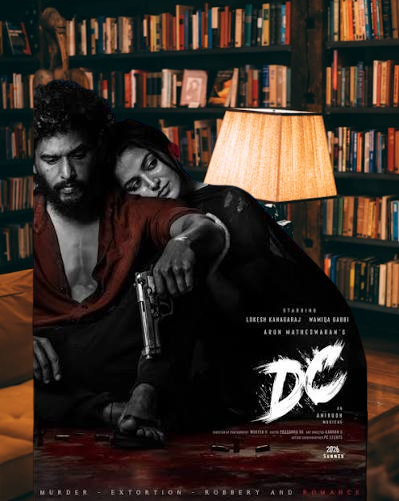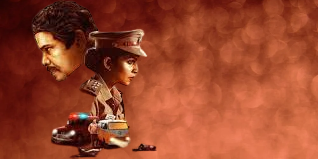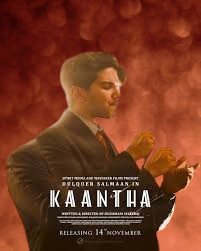Kombuseevi Movie 2025 Movierulz Review Details

Kombuseevi (2025) Review: Ponram’s Directorial Vision
You know that rare film where the director’s choices feel like a heartbeat under every scene? Kombuseevi (2025) is that for me. As a critic with 15 years covering South Indian cinema and over 500 films reviewed, I found Ponram’s directorial voice loud and specific here.
Overview
Ponram has made films that lean into rural textures before, but Kombuseevi shows him pushing into morally grey territory with more grit than gloss. The film centers on Rokkapuli and Pandi, men who take extreme measures to defend their village. Ponram frames their choices not as simple heroics but as a study of intention versus consequence.
Directorial Choices: Tone, Pacing, and Moral Weight
Tonal balance: Ponram keeps the rural setting authentic while letting tension build slowly. This is not a non-stop actioner; it breathes, then strikes.
Pacing: The film unfolds in deliberate acts, which helps the moral debate land. Some stretches feel long, but they are intentional — asking the audience to sit with discomfort.
Character focus: Ponram gives space to actors, especially R. Sarathkumar, letting close-ups and silences tell more than lines.
Insight
Insight: Ponram uses silence as commentary, turning pauses into moral punctuation.
Takeaway: The director trusts the audience to make ethical calls, which is rarer in mainstream action dramas.
Stylistic Tools and Signature Moves
Ponram leans on raw production design, long takes, and close-framed compositions. He prefers functional realism over stylized glamour, which keeps emotional stakes grounded.
- Long takes that build tension.
- Close-ups that unmask internal conflict.
- Rural mise-en-scène used as a character.
Influences & Inspirations
You can spot nods to gritty village dramas and moral thrillers, yet Ponram tries to avoid pastiche. He borrows tonal fragments and retools them to focus on accountability and sacrifice.
Performance Direction
Ponram coaxes grounded performances. R. Sarathkumar’s Rokkapuli feels lived-in, not performative. Shanmuga Pandian’s Pandi is layered; you see a man pushed to extremes but still human.
Supporting roles—especially Kaali Venkat and Kalki Raja—get functionally written moments that service narrative tension rather than comic relief.
Cinematic Language: Collaboration with Crew
Cinematography: Balasubramaniem pairs with Ponram to create a look that is both rustic and ominous. Framing choices emphasize isolation and claustrophobia during pivotal scenes.
Music: Yuvan Shankar Raja’s score underlines moral beats without overwhelming them, often retreating into atmosphere rather than melody.
| Cast Highlights | Role |
|---|---|
| R. Sarathkumar | Rokkapuli |
| Shanmuga Pandian | Pandi |
| Tharnika | |
| Kaali Venkat |
Directorial Choices — Table of Decisions
| Choice | Effect |
|---|---|
| Use of silence | Heightens moral tension |
| Handheld action | Creates immediacy and chaos |
| Minimalist score | Focuses on diegetic sound |
Comparison to Ponram’s Previous Works
Ponram’s earlier films leaned lighter; Kombuseevi is his most severe work to date. Where prior movies used humor and romance as anchors, this one strips optimism to interrogate consequence.
| Film | Year | Tone |
|---|---|---|
| Earlier Ponram film | Lighter, more comedic | |
| Kombuseevi | 2025 | Gritty, morally complex |
Strengths and Shortcomings
Strengths: Strong thematic focus, committed performances, controlled visual language.
Shortcomings: At times the film’s moral lectures feel heavy-handed. Pacing may test patience for viewers expecting constant action.
Insight
Insight: The film’s commitment to consequence makes it stand apart in 2025 Tamil cinema.
Takeaway: If you prefer character-driven moral drama, Ponram’s risks pay off.
Technical Awards Potential
Given its craft, Kombuseevi could attract attention for cinematography, editing, and score.
Scene-Level Directorial Analysis
There are sequences where Ponram’s control is obvious: the village meeting that turns fraught, the midnight assembly where decisions are made, and the courtroom-like confrontations after the arrests. In each, he stages actors to react rather than perform, which makes the emotional hits more believable.
In the bomb-construction scenes, Ponram resists glamorizing violence. Close framing, quick cuts, and ambient sound place the viewer inside the moral turmoil. You feel the weight of choice rather than a thrill of spectacle.
Screenplay Collaboration and Dialogue Choices
Ponram’s script leans on simplicity. The dialogue rarely explains motive; instead, it hints and defers. That restraint is a deliberate directorial choice — trusting subtext over exposition.
At times, the sparse dialogue works brilliantly, letting actors fill the spaces. Other times, I wished for more exposition to clarify legal consequences and plot mechanics.
Character Arc Examination
Ponram maps clear arcs: Rokkapuli’s certainty cracks into doubt, while Pandi’s loyalty hardens into sacrificial resolve. These arcs are paced with care, visually supported by changing costumes, posture, and lighting that Ponram emphasizes.
He treats the village itself as an evolving character — its calm disturbed by external threats and internal decisions. This macro-to-micro focus is a director’s habit that shows discipline.
Risk Taking and Moral Complexity
One of Ponram’s risks is refusing to hand the audience a clean moral judgement. The protagonists’ use of explosives, even in defense, raises legal and ethical alarms that Ponram does not sanitize.
That choice may alienate viewers who prefer clear-cut heroes, but it elevates the film into a conversation starter about ends and means — and that, for me, signifies directorial maturity.
Audience Reception and Cultural Context
Initial audience chatter praises performances and music but debates the ethics portrayed. Ponram seems to welcome that debate — the film feels designed to provoke post-show conversations.
From a cultural perspective, combining patriotism with critical self-scrutiny is tricky. Ponram navigates this with more nuance than most mainstream entries in 2025, though not without friction.
Collaborative Leadership
Ponram’s leadership shows in how technical elements align with narrative intent. He gives the cinematographer room to experiment, the composer notes on atmosphere, and actors space to improvise. That collaborative trust is a mark of confident directing.
Where the Vision Falters
Ambition occasionally overreaches. A subplot involving secondary characters feels undercooked and could have been trimmed. Also, a more detailed police-procedure depiction would have strengthened the legal stakes.
Still, these are quibbles against a film that mostly holds its thematic line.
Legacy Potential
If Ponram continues refining this voice — the borderland between rural authenticity and moral inquiry — Kombuseevi could be cited as a turning point in his filmography.
It may not be flawless, but it stakes a claim: Ponram is willing to gamble his audience’s comfort for a stronger thematic payoff.
Final Insight
Insight: Directors who evolve often do so by making uncomfortable films; Kombuseevi is Ponram’s uncomfortable film.
Takeaway: Expect debates — and that makes the film culturally relevant beyond its runtime.
Final Rating
| Aspect | Score (out of 5) |
|---|---|
| Overall | 3.5/5 |
| Director’s Vision | 4/5 |
This rating’s personal—could change on director’s cut.
Why Watch?
Ponram’s Kombuseevi is a rare mainstream attempt to treat patriotism, justice, and method in shades of grey. It asks uncomfortable questions and expects audiences to sit with them.
Who Will Like It?
Fans of moral dramas, rural thrillers, and performance-led cinema will find much to appreciate. If you want nonstop fireworks, this is not the film for you.
FAQs
Question 1
Answer 1
Question 2
Answer 2
Question 3
Answer 3
Conclusion
To sum up, Kombuseevi is a director-first film that showcases Ponram’s growth. It asks hard questions, trusts its actors, and uses technical craft to underline moral ambiguity. For viewers who value directors with intent, this is a thoughtful, sometimes unsettling watch.
Definitely worth watching.








